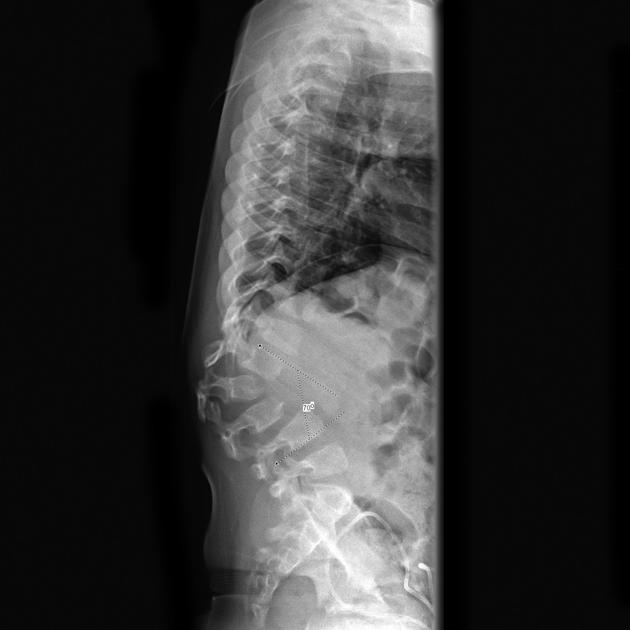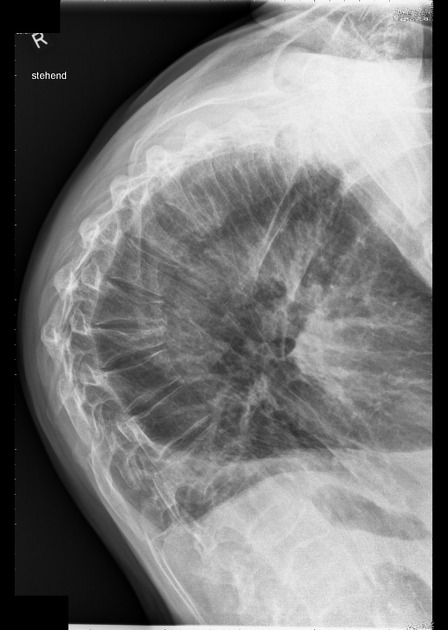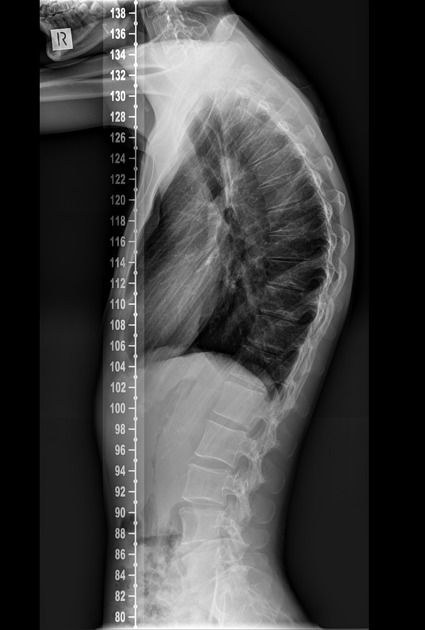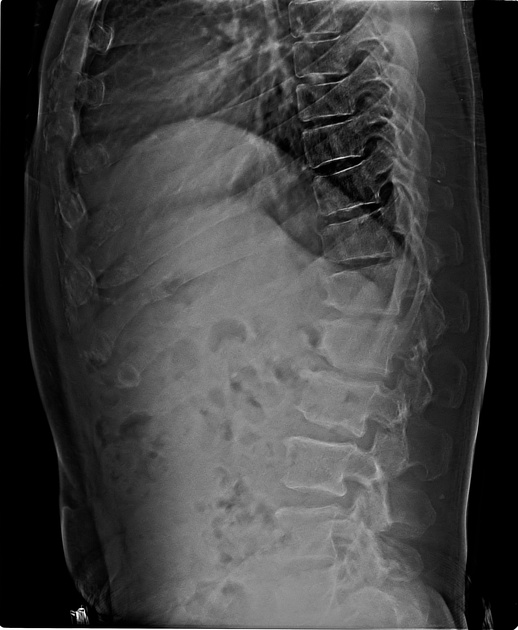Kyphosis (plural: kyphoses), much less commonly kyphus, is a term used to describe the sagittal curvature of the thoracic spine. Hyperkyphosis is when the kyphosis angle is above the normal range 5,7.
On this page:
Pathology
Kyphosis increases with age, with a kyphosis angle of ~25° (range 20-29°) in adolescents and young adults to ~38.5° (range 35-42°) in adults aged over 65 years 5,7. There appears to be no gender predilection, but it may vary with ethnicity 7.
A kyphosis angle >40° has been widely accepted as the threshold for hyperkyphosis, although no published consensus exists 5,7,9. Using the >40° threshold, the incidence of hyperkyphosis in 60-year-olds and over is ~30% (range 20-40%), and in 70-year-olds and over is ~55% 7. Thus, some authors recommend a threshold of >50° 5 or >60° 7 to avoid overdiagnosis, although an age-adjusted range between 20-60° may be more appropriate 7.
Etiology
An increased kyphosis angle is associated with the following:
normal aging: the degree of kyphosis is mainly related to intervertebral disc degeneration and vertebral body shape with a minor component related to decreased muscle strength 5,7
-
spinal compression or wedge fracture, usually related to osteoporosis 5
traumatic vertebral body fracture 6
present in ~40% of patients with hyperkyphosis 5
each vertebral body fracture increases the kyphosis angle by ~4 degrees 5
A decreased kyphosis angle is seen in the following condition:
Radiographic features
Plain radiograph
The Cobb angle technique is the most commonly used to assess for kyphosis 5,6. It is measured on a unsupported erect lateral projection as the angle between two thoracic vertebrae, although the levels used vary in the literature:
superior endplate of T2 9 or T4 5 or T5 9 (depending on visualization)
inferior endplate of T12 5,9
The Cobb angle technique
has inter- and intra-observerser variation of 3-5° 5
may overestimate kyphosis if there are concurrent vertebral endplate irregularities 1
measuring above the T4 level results in higher kyphotic angles 7
Other kyphosis angle measurement techniques include:
wedge angle 6
alternative Cobb 1
adjacent endplate method 6
Treatment and prognosis
Exercise programs and bracing may reduce thoracic hyperkyphosis in adults 8.
Hyperkyphosis is associated with reduced physical performance, increased falls, and increased vertebral body fracture risk as well as increased all-cause mortality 5,7.
History and etymology
Derived from the Greek word kyphōsis, from kyphos meaning humpbacked 4.










 Unable to process the form. Check for errors and try again.
Unable to process the form. Check for errors and try again.